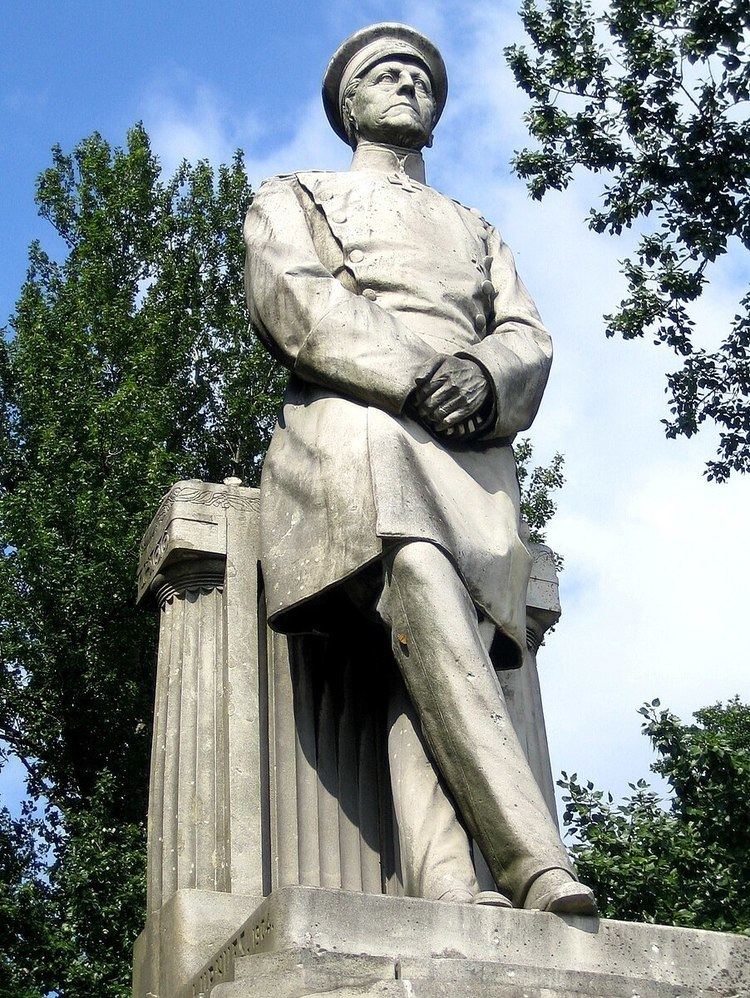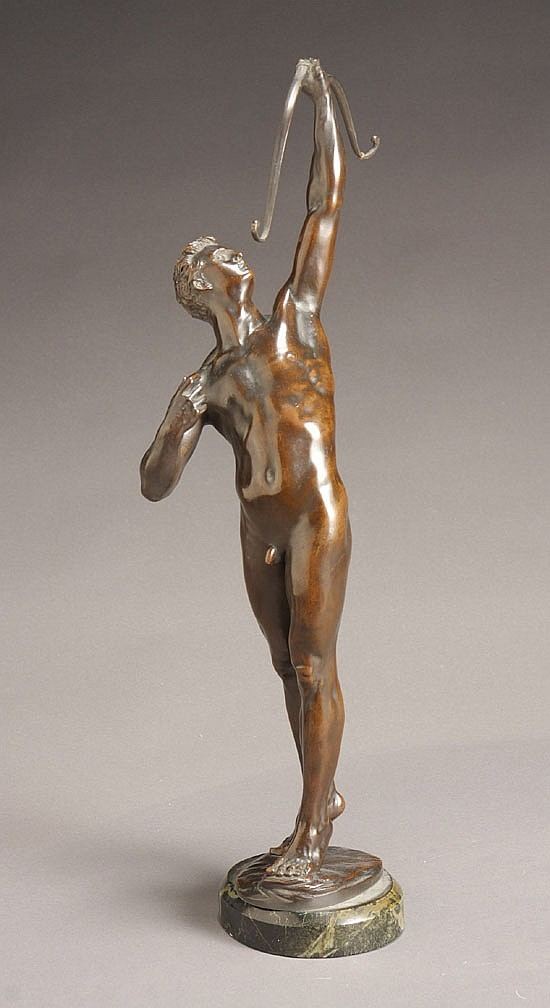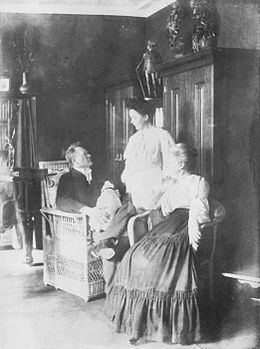Name Joseph Uphues | ||
 | ||
Joseph Johann Ludwig Uphues (23 May 1850, Sassenberg – 2 January 1911, Berlin) was a German sculptor.
Contents

Life

After an apprenticeship as a carpenter, he embarked on a two-year tour of Belgium and the Netherlands. From 1870 to 1871, he learned stone masonry in Wiedenbrück. He worked there until 1878, when he entered the Prussian Academy of Arts, studying sculpture under Reinhold Begas and Fritz Schaper. In 1882 he was enrolled in Begas' Master Student class and worked as his assistant until 1891, opening his own studio in 1892. He became a Professor at the Academy and joined the Berlin Secession in 1899.
The Siegesallee (Victory Avenue)

He was one of the sculptors commissioned to produce statues for the Siegesallee, a monumental project conceived by Kaiser Wilhelm II as his gift to the people of Berlin. Uphues produced two sets of figures, dedicated in 1899:
As is the case with virtually all of the Siegesallee statues, his were damaged during World War II and are currently displayed at the Spandau Citadel. The Bach figure has disappeared.
Other selected major works
Berlin
Düren
Koblenz
Wiesbaden
